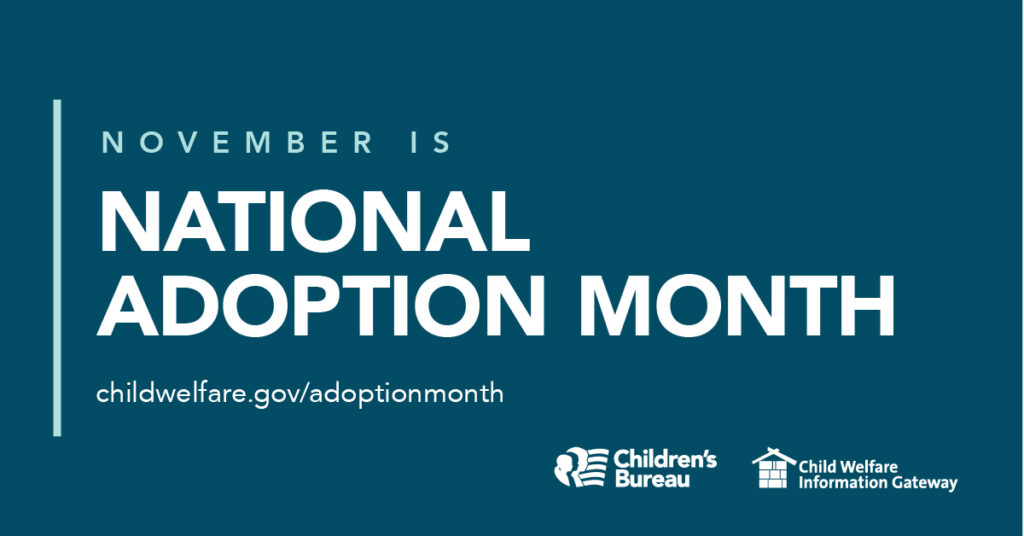This week, our In Focus section reviews several calendar year (CY) 2024 Medicare payment final rules that the Centers for Medicare & Medicaid Services (CMS) issued in recent weeks, including those pertaining to:
CMS also announced the OPPS Rule for 340B-Acquired Drug Payment Policy in response to court-invalidated payment rates and on November 6, 2023, released the 2025 Contract Year Policy and Technical Changes to Medicare Advantage. The latter regulation addresses guardrails for brokers, behavioral health expansions, and several dual eligible-related policies. We will analyze these provisions in next week’s In Focus.
These final rules set the payment rates and other Medicare payment policies for services that applicable providers provide under the fee-for-service Medicare program and take effect January 1, 2024. Additionally, the final rules, particularly the Physician Fee Schedule, are expected to further inform Congress’ discussions and, ultimately, any action on healthcare policies in a possible year-end legislative package.
For example, the Senate Finance Committee has released draft language that would mitigate the projected physician payment reduction, among other policy changes. Provider organizations and interested stakeholders will want to analyze the impact of the final policies across the rules, including new codes, payment rates, and opportunities to participate in accountable care organizations (ACOs).
Overall, Health Management Associates (HMA) notes several trends across these three Medicare payment regulations:
- Health equity remains a significant focus of CMS under the Biden Administration.
- The agency continues to expand its coverage of behavioral health services under Medicare and enhance payment for and access to these services.
- Medicare is moving toward incrementally supporting care delivered in accordance with beneficiaries’ preferences, such as moving away from reimbursing largely for in-person services and toward supporting telehealth services.
- CMS is creating pathways for reimbursement for a broader range of clinicians and caregivers who are addressing Medicare beneficiaries’ needs.
- CMS continues its efforts to improve hospital price transparency with policies aimed at encouraging providers to publicly report data.
2024 Medicare Physician Fee Schedule and Other Part B Payment Policies Final Rule
On November 2, 2023, CMS released the final rule for the Medicare Physician Fee Schedule (MPFS) for CY 2024. CMS finalized an overall 1.25 percent decrease in MPFS payment rates from 2023 to 2024. The final 2024 PFS conversion factor remains largely unchanged ($32.74) from the proposed rule ($32.75) but will result in a 3 percent decrease from the CY 2023 conversion factor ($33.89). Among the most important policy changes in the final rule is the establishment of a new add-on code (G2211) for complex care provided in the primary care setting.
In addition, CMS will begin allowing additional behavioral health providers to participate in Medicare (described further below) and make numerous telehealth policy changes mandated in the Consolidated Appropriations Act of 2023. CMS also finalized changes to the Medicare Shared Savings Program (MSSP), which CMS estimates will increase ACO participation in MSSP by roughly 10−20 percent.
CMS finalized several policies to address health equity, including coding and payment changes focused on providing access to new services and addressing Medicare beneficiaries’ unmet health-related social needs (HRSNs). The final changes affect mental health and substance use disorder (SUD) treatment providers, address payment accuracy for primary care in the context of whole-person care, and expand access to dental care for cancer patients. The changes for 2024 include:
- Caregiver training: Medicare will now pay practitioners who train caregivers to support patients with certain diseases (e.g., dementia) in carrying out a treatment plan. Services must be furnished by a physician or a non-physician practitioner or therapist.
- Community health integration (CHI) services: The final rule includes separate coding and payment for CHI services, including person-centered planning, health system coordination, and facilitating access to community-based resources to address unmet social needs that interfere with a practitioner’s diagnosis and treatment plan.
- Principal illness navigation (PIN) services: The final coding and payment rules for PIN services describe care navigation services for individuals with high-risk conditions. CMS included a subset of PIN services to support individuals with severe mental illness and SUD through use of auxiliary personnel (i.e., peer support specialists). The definition of a serious, high-risk condition is dependent on clinical judgment. CMS will monitor utilization across beneficiaries and specialties to ascertain how PIN services are best used going forward.
- Social determinants of health risk assessments: This evaluation can be provided and billed as an add-on service to an annual wellness visit or with an evaluation and management or behavioral health visit.
- Marriage and family therapists and mental health counselors, including eligible addiction, alcohol, or drug counselors who meet qualification requirements for mental health counselors: These types of providers may now enroll in Medicare and bill for their services starting January 1, 2024. The rule expands coverage and increases payment for crisis care (including mobile units), SUD treatment, and psychotherapy as well as psychotherapy performed in conjunction with an office visit and for health behavior assessment and intervention services.
2024 Hospital OPPS and ASC Final Rule
On November 2, 2023, CMS released a final rule for hospital OPPS and ASCs. The following policies are included in the final rule:
- A 3.1 percent increase in payment rates for hospitals and ASCs that meet certain quality reporting requirements. This amount is based on the projected 3.3 percent increase in the hospital market basket and is consistent with the 2024 payment increase for inpatient services.
- No services will be removed from the inpatient-only (IPO) list, but 10 procedures will be added to the IPO.
- The list of ASC-covered surgical procedures will be updated to include 37 additional surgical procedures.
- Drugs and biologicals acquired through the 340B program will have the same payment rate as those not acquired under the 340B program—the average sales price plus 6 percent.
- CMS will pay for intensive outpatient program services. The final rule includes the scope of benefits, physician certification requirements, coding and billing, and payment rates.
340B Rule
Section 340B of the Public Health Service Act (340B) allows participating hospitals and other providers to purchase certain covered outpatient drugs or biologicals from manufacturers at discounted prices. Until 2018, the Medicare payment rate for Part B-covered outpatient drugs provided in outpatient hospitals was generally the average sales price (ASP) plus 6 percent. From 2018 through September 2022, CMS paid for these drugs at ASP (22.5 percent). After extensive litigation and a Supreme Court ruling, CMS returned payment for 340B drugs to ASP plus 6 percent in late 2022, and payment has continued at that level since. Consequently, payment for other services was reduced slightly more than 3 percent in 2023 to meet statutory budget neutrality requirements.
In this rule, CMS finalizes a remedy for 2018−22 payments in light of the court rulings. The agency will provide lump sum payments to 340B hospitals to cover the difference between ASP + 6 percent and ASP – 22.5 percent. Lump sum payments to 340B hospitals will result in roughly $9 billion in payouts to these facilities, in addition to the $1.5 billion they already have received through resubmitted claims. CMS had proposed that beginning in 2025, non-drug OPPS payments would be reduced by 0.5 percent to recover the budget neutrality-based payment increases resulting from the rescinded 340B cuts. According to CMS, hospitals received approximately $7.8 billion in additional spending on non-drug items and services because of budget neutrality. Earlier this year, CMS proposed a 0.5 percent pay cut to all hospitals, which would be in place for 16 years to fully adjust for the payment changes. CMS is finalizing the budget neutrality adjustment but will defer implementing these cuts to 2026 based on public comments about hospital budgetary pressures.
CY 2024 Home Health Prospective Payment System Final Rule
On November 1, 2023, CMS issued the CY 2024 Home Health Prospective Payment System (HH PPS) Rate Update final rule, which informs Medicare payment policies and rates for home health agencies (HHAs). This rule includes routine revisions to the Medicare Home Health PPS payment rates for CY 2024 in accordance with existing statutory and regulatory requirements. According to CMS estimates, Medicare payments to HHAs in CY 2024 will increase in the aggregate by 0.8 percent, or $140 million, from CY 2023.
However, CMS also finalized a permanent prospective payment adjustment to the CY 2024 home health 30-day period payment rate that reduces the update. This adjustment is intended to account for any increases or decreases in aggregate expenditures that result from the implementation of the Patient-Driven Groupings Model (PDGM) and 30-day unit of payment as required in the Bipartisan Budget Act of 2018. The finalized −2.890 percent adjustment is half the total projected adjustment of negative 5.779 percent. As a result, CMS estimates that Medicare payments to HHAs in CY 2024 will increase in the aggregate by 0.8 percent, rather than the 2.2 percent decrease as initially proposed.
CMS’ decision to implement only half of the permanent prospective payment adjustment in CY 2024 was in response to concerns from public commenters about the magnitude of implementing the proposed large single-year payment reduction. However, CMS also maintains that it will have to account for the remaining permanent adjustment it chose not to apply in CY 2024 and make other potential adjustments to the base payment rate in future rulemaking.
Other Proposals
CMS also is finalizing proposals to:
- Rebase and revise the home health market basket to adopt a 2021-based home health market basket, including proposed changes to the market basket cost weights and price proxies
- Reduce the labor-related share of the market basket to 74.9 percent based on the 2021-based home health market basket compensation cost weight (down from 76.1 percent)
- Recalibrate the PDGM case-mix weights using CY 2022 data
- Update the low utilization payment adjustment thresholds, functional impairment levels, and comorbidity adjustment subgroups for CY 2024
- Codify statutory requirements for disposable negative pressure wound therapy
- Establish regulations to implement payment for items and services under two new benefits: lymphedema compression treatment items and home intravenous immune globulin
- Establish several enrollment provisions for hospices and other provider types and create a new informal dispute resolution process for hospice programs and a special focus program to provide enhanced oversight of the poorest-performing hospices
- Implement various changes to the Home Health Quality Reporting Program and Home Health Value-Based Purchasing Model
2024 End-Stage Renal Disease Prospective Payment System Final Rule
On October 27, 2023, CMS issued a final rule that updates payment rates and policies under ESRD PPS for renal dialysis services furnished to Medicare beneficiaries on or after January 1, 2024. This rule also updates the acute kidney injury (AKI) dialysis payment rate for renal dialysis services that ESRD facilities furnish in CY 2024.
For CY 2024, CMS will increase the ESRD PPS base rate to $271.02, upping total payments to ESRD facilities by approximately 2.1 percent. The CY 2024 ESRD PPS final rule also includes several changes related to ESRD PPS payment policies. First, the rule includes a payment adjustment that will increase payment for certain new renal dialysis drugs and biological products after the transitional drug add-on payment adjustment period ends. According to CMS, the increase will ensure payment is not a barrier to accessing innovative treatments for Medicare ESRD beneficiaries.
For more details about the policies described herein, contact Amy Bassano ([email protected]), Zach Gaumer ([email protected]), Andrea Maresca ([email protected]), John Richardson ([email protected]), Kevin Kirby ([email protected]), or Rachel Kramer ([email protected]).












